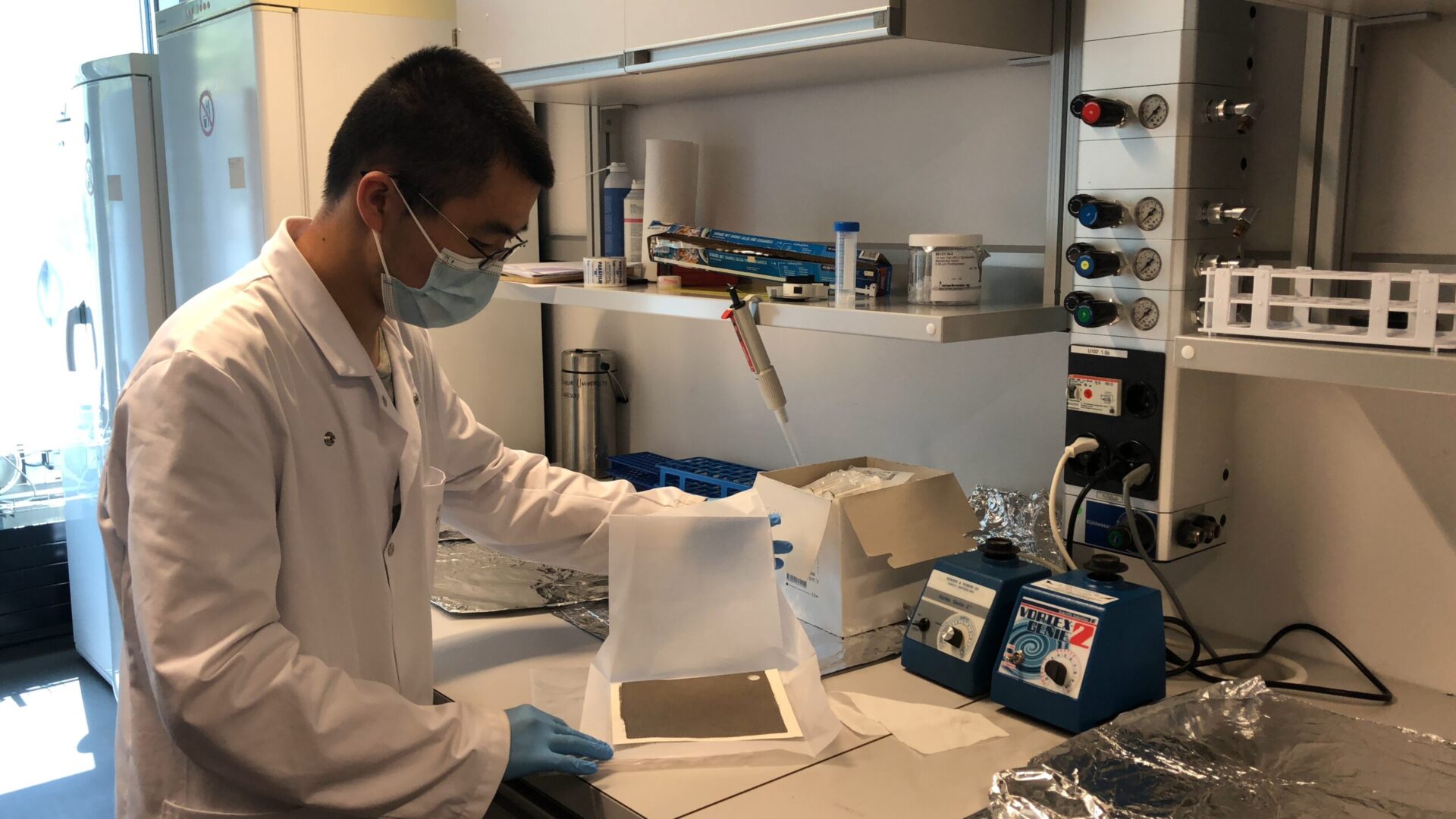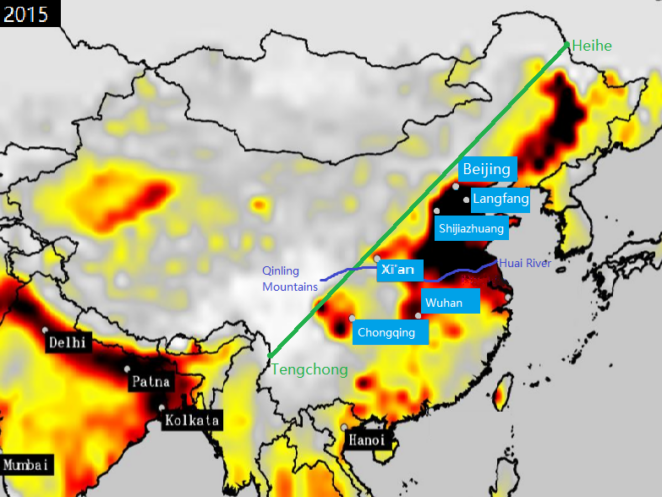Break down the dome – air pollutant source apportionment for clean air in Chinese cities

Introduction
Chinese cities have had some notable successes over the last decade in reducing air pollution. Strong policy measures were brought in, starting with the air quality standard enacted in 2012, and recently a 3-year action plan from 2018 aiming for 18% reduction of particulate matter density. A key measurement of air pollution is miniscule particles of dust, soot, dirt or smoke – known as particulate matter or PM2.5. Analysis has shown concentration of PM2.5 in Beijing was reduced from 89.5 µg/m³ in 2013 to 38 µg/m³ in 2020.
Previous Sino-Swiss collaboration supporting the revision and enforcement of China’s Air Pollution Prevention and Control Law have helped pilot cities such as Shijiazhuang in the Jing-Jin-Ji region in the north China formulating their clean air action plans. The cooperation also piloted the pioneering Diesel Particle Filter (DPF) technologies in economically developed cities including Beijing and two cities in the south of China, Nanjing and Xiamen.
The present Sino-Swiss cooperation aims to build on these successes to further improve overall air quality in Chinese cities and implement precise air pollution management. Chinese cities need research and technologies for prediction of air pollution events, analysis of potential health impacts and cost-efficient response measures. For instance, Jing-Jin-Ji region still experiences haze weather due to winter heating. Precise air pollution management will require good understanding of the pollution profiles and emission inventories, observation and monitoring of air pollution process, diagnosing and identifying the dominating polluting sources.
In September 2021 the World Health Organization (WHO) updated its Air Quality Guidelines (AQG) for air pollution –noting that in 2019, more than 90% of the global population lived in areas where concentrations exceeded the 2005 WHO air quality guideline for long term exposure to PM2.5 (the 2005 AQG level of 10 µg/m³). WHO data shows that some cities suffer from air pollution levels that are as much as 10 times, or more, above the guideline limits. In many Chinese cities, weather phenomena – such as wind storms and winter heating events – which might also be impacted by climate change – interact with air pollutants to create serious health risks.
Project objective and partnerships
In 2019 the Swiss Agency for Development and Cooperation (SDC) initiated a new project on air pollutant source apportionment – the practice of deriving information about pollution sources and the amount they contribute to ambient air pollution levels.
The objective is:
Air pollution in key Chinese cities is significantly reduced, thereby improving people’s health and well-being, through more effective policies as a result of applying state-of-the-art pollutant source analysis techniques, and the Sino-Swiss experience is shared regionally and globally.
The new project is based on the previous Sino-Swiss collaboration which supported the legislative framework in air pollution control, as well as formulating and implementing clean air action plans at different levels.
The Swiss partners in this project are the Paul Scherrer Institute (PSI) with acknowledged knowledge and techniques in measuring and analyzing air pollutant chemical components, and the ETHZ with years collaboration with China in the air pollution sector. The Chinese partners in this project are the Institute of Earth Environment (IEE) of the Chinese Academy of Sciences (CAS) in Xi’an, in consultation with the National Joint Research Center for Tackling Key Problems in Air Pollution Control (NAPC) hosted by the Chinese Research Academy of Environmental Sciences (CRAES) of the Chinese Ministry of Ecology and Environment (MEE).
Methods and Tools
6 pilot cities in 3 groups were selected: 1) 3 cities locating in the key Jing-Jin-Ji region including the capital, Beijing, one of China’s long-standing most heavily polluted cities, Shijiazhuang, and the prefecture-level city Langfang near Beijing; 2) Xi’an in the Fen-Wei plain in northwest China, a key region that central government requires focus on; 3) 2 cities in south China without district heating in winter time, central city Wuhan and the most populated province-level city Chongqing.

Research in the 6 pilot cities should 1) discover the fundamental reasons for the air pollution in north China in winter time; 2) explore the different pollution characteristics between south and north cities; 3) identify the issues of air pollution in the less-developed Fen Wei plain. The project will receive support from and contribute to the national source apportionment program focusing on cities in the north of China.
As the basis and precondition to conduct the project, short and long-term campaigns of air pollutant sampling and laboratory analysis are being carried out in all 6 pilot cities. The short-term campaign takes around 1 month, aiming at analyzing the air pollution characteristics during the heavy pollution episodes, while the long-term campaign requires more than one season duration in order to get better picture of the air pollution. A set of state-of-the-art instruments are deployed to measure and analyze the different components in the particulate matter, such as the organic and inorganic compounds from both primary emissions and secondary formation by photochemical reaction. Samples are analysed to monitor the heavy metals produced from industries, vehicle tire abrasion, construction sites or carried by wind storms, and the black carbon from both vehicle combustion and bio-mass burning, etc. Exact identification and quantification of sources of these air pollutants need source apportionment models and tools, which is the core task of this project.
In practice, the source-oriented model requires the establishment of emission inventory, which is often incomplete or not updated in many Chinese cities. The two commonly used receptor models in source apportionment are the Chemical Mass Balance (CMB) and the Positive Matrix Factorization (PMF). Both methods have their constraints in practical application. For instance, the CMB method requires complete knowledge of the air pollution profiles, which is not in place in most Chinese cities. Accuracy of the PMF method depends on sufficient air pollution data, which takes time to fulfil. In the Sino-Swiss collaboration, PSI and IEE are developing together a hybrid method that can overcome the limitation of CMB and PMF and combine their advantages. The ultimate goal is to develop a robust method which can be applied to more cities, and in real-time resolution to meet the fast response need for cities to take immediate cost-effective measures in their daily air pollution management.
Outcomes and Impacts
4 outcomes are expected:
- The capacity of Chinese cities to do accurate air pollutant source apportionment is improved.
- Chinese cities better understand their air pollution profile through dynamically updated and reliable air pollutant emission inventories.
- More effective air pollution control policies are designed and implemented based on the source apportionment results and the updated emission inventories.
- The knowledge and experience developed by the project are effectively disseminated and used in China, regionally and globally.
With the preliminary source apportionment results for city Xi’an, the project has provided timely and active support to Xi’an municipality in addressing air pollution (see Figure).
Further interpretation of the source apportionment results at this stage is still early. The project will also investigate the health impacts of air pollution by analyzing the Reactive Oxidization Species (ROS) which reflect the oxidization potential of PM2.5, a toxicity indicator for human health.
The project will generate more results for different pilot cities in the future, and will discuss these results with local municipalities. The project plans to deliver trainings to the pilot cities improving their capacity in air pollution monitoring, source apportionment, as well as applying the results in air pollution policy making. The project will also share the results and China’s experience with other developing countries such as India, Mongolia and Nepal helping them dealing with their air pollution issues.
(0) Comments
There is no content